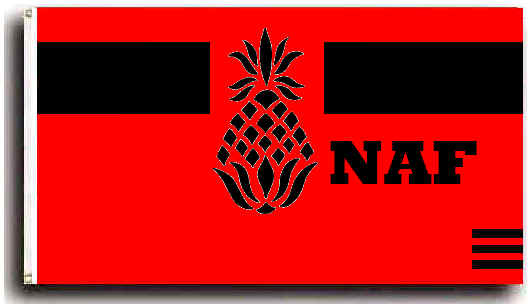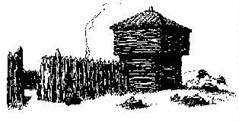|

|
Yei Bi Chei and
Totem Pole
The semi-arid land
inhabited by the Fremont Indians contains areas of spectacular beauty.
There are more National Parks (Zions, Bryce, Arches, Capitol Reef, and
Canyonlands), National Monuments, and State Parks in the homeland of the
Fremont Indians than in any other area of North America.
|
["Click"
on the picture - use your "Back" button to return to
article]
|

|
Monument Valley
There were probably no more than ten
thousand Native American Indians scattered across the canyonlands
of Utah and high deserts of the Great Basin at any one time (Barnes).
|
|

|
The Mittens
Harvard University’s Peabody
Museum funded the Claflin-Emerson Expedition to study Prehistoric Indian
sites of Utah. A member of the Claflin-Emerson research project, Noel
Morss excavated in 1928 and 1929 several prehistoric Indian sites along
the Fremont River of central Utah. Morss coined the term Fremont Indians
to describe the Native Americans inhabiting these early prehistoric Native American Indian sites. Morss maintained the Fremont Indian Culture
was clearly influenced by the Southwest Anasazi Culture, but was not an
integral part of it.
|
|

|
Fremont Stone Knife
|
Archeologists use four distinctive
artifact categories to distinguish the Fremont Indian Culture from the
Anasazi or Ancestral Puebloans (Madsen):
a singular style of basketry,
called one-rod-and-bundle, incorporated willow, yucca, milkweed, and
other native fibers. Some archeologists believe this single artifact
differentiates the Fremont Indian culture from the Anasazi, or the
historic Native American groups.
moccasin style constructed from
the hock of a deer or mountain sheep leg. This and other moccasin types
found in Fremont sites are very different from the woven yucca sandals
of the Anasazi.
thin gray pottery with smooth,
polished surfaces or corrugated designs pinched into the clay.
a distinctive rock art style used
in pictographs, petroglyphs, and clay figures depicting trapezoidal
human figures bedecked in necklaces and blunt hairstyles.
A question still unanswered is where
did the Fremont Indians come from?
One theory is the Fremont Indians
were a group of Anasazi that split off from the Hopi and moved into
southern Utah.
Another theory is that the Fremont
Indians, like the Anasazi emerged from an older desert archaic culture.
Dr. Jesse D. Jennings summarized his
views on the Desert Culture (Desert Archaic) model at the Leigh Lecture at
the University of Utah in 1975 (Janetski):
From 10,000 or more years ago,
until A.D. 400, the only culture represented in Utah, as well as the
rest of the Great Basin, was the Desert Archaic. That culture is
characterized as a hunting-gathering one, a flexible, highly adaptive
life way that has characterized most of man's worldwide history.
A new archeological study area along Range Creek in the Book Cliff
Mountains of Utah will contribute a great deal of information on the
Fremont Indian Culture. Protected for over fifty years by Waldo Wilcox, a
Utah rancher, the Uinta Fremont villages along Range Creek are virtually
untouched.
|

|
Fremont Artifacts Wilcox Ranch
The Wilcox ranch was recently acquired by the State of Utah. The Range
Creek Fremont sites will be studied and protected by Utah's Wildlife
Resources' Division of History and the Utah Museum of Natural History.
|

Fremont Indian Map
Based on thin gray-coil pottery, the
Fremont Indian sites in Utah are divided into five different groups. These
classifications are based on a few common traits, but does not mean they
were the same people. Although the vast majority of the Fremont Indian
sites are in Utah, there have been sites, or Fremont artifacts, found in
western Colorado, southwestern Wyoming, eastern Nevada, and southern
Idaho.
Fremont Indian origins are
contemporaneous with early Mogollon villages of New Mexico and Arizona.
The Fremont and Mogollon Indian cultures share many characteristics of
architecture and ceramic design. Around 400 A.D., the Fremont Indians
obtained corn through trade with the Mogollon. The corn used by the
Fremont Indians is known as Fremont Dent. This variety of corn is
resistant to drought, environmental extremes, and has a short growing
season. The Fremont Indian corn appears to have been developed in the
Fremont area from an early species found in the Mogollon highlands. This
is not the same species of corn found in the Four Corners region (Stone).
The Mogollon corn
had originated in Mesoamerica about 4000 B.C.. A wild plant known as
Teosinte is the probable ancestor of corn, but this is a subject of debate
between botanists (Diamond). The ears of Teosinte were only a few inches
long and had no covering husks.

Teosinte - National Science
Foundation
By 750 A.D., agriculture was
beginning to be a major source of food for some groups of Fremont Indians.
In many cases, the Fremont Indians were using limited irrigation to grow
The Three Sisters (corn, squash, and beans) in the semi-aired land. Some
of the irrigation ditches were several miles long, and are still visible
in a few places today (Barnes).
The floral and faunal material found
at various Fremont Indian sites indicates a mixed horticultural and
hunting-and-gathering subsistence (Stone). Corn, beans, and squash grown
along the river bottoms added to the Fremont diet of native plants such as
pickleweed, amaranth, pinyon nuts, globe mallow, rice grass, beeweed,
berries, bulbs, and tubers along with meat from hunting.
Nine Mile Canyon between Price and
Myton, Utah is one of the richest areas for Fremont Indian artwork. The
picture below is at the mouth of Cottonwood Canyon and Nine Mile Canyon.
The pictures of the Fremont granary, the pithouse outline, and rock
shelters are located in this area.
|

|
Mouth of Cottonwood Canyon
|
This Fremont granary is
across from the Fremont pithouse outline shown below. The granary is on
the dark ledge just above the arrow.
|

|
Fremont Granary
The pithouses of the Fremont were
low semi-subterranean structures covered with brush with a fire ring in
the center. Sometimes, the pithouse were covered with a mud coating. The
pithouses varied in shape from circular to rectilinear and were generally
about two feet deep.
|
|

|
Fremont Pithouse
Outline - Nine Mile Canyon
|
Dave Summers of Las Vegas sent a
picture of the panel after it was restored by a joint project of the
citizens of Emery County, Utah and the BLM.
|

|
Reconstructed
Pithouse - State Park, Boulder, Utah
|
Entrance to the pithouse was through
the opening at the top using a ladder. The hole also served as a smoke
hole.
The Parowan Fremont built their
pithouses close together, usually ten to twenty pithouses on a valley
floor near streams (Stone). On the other hand, the San Rafael Fremont's
pithouses were usually slab-lined. They also built above ground masonry
structures, often multi-roomed constructed with and without mortar. In
both cases, four central roof supports were used. The structures were
plastered on the interior walls, and slab-lined fire pits were common. The
San Rafael Fremont village sites were on hills and ridges overlooking
permanent water sources and their farmland.
Rock overhangs were used by the
Fremont Indians for storage and for shelter.
|

|
Rock Shelter
|
|

|
Red-lined Roof
|
The Fremont Culture was not a rigid
society like the Anasazi. The Fremont Indians appeared to take delight in
being different. Jackal houses, small unit houses, and pithouses are often
found in the same village (Barnes). Despite some villages being close
together, the Fremont Indians were an aggressive people and uneasy truces
existed between the villages.
Deer, bighorn sheep, rabbits, birds,
fish and rodents were hunted using snares, nets, fishhooks, and the bow
and arrow. The scene below at the mouth of Cottonwood Canyon is of a deer
hunt, notice the large number of fawns in the petroglyph.

Hunter Panel - Nine Mile
Canyon
Unlike the Anasazi, Fremont Indian
women used animal skins to make clothing. Animal hides were used for
breechclouts, moccasins, robes, leather mittens, and other warm garments.
The Fremont women sewed and mended the leather, which the Anasazi never
mastered.
As hunter-gathers and
settled-village lifestyle, the Fremont Indian culture lasted for about
nine-hundred years. Note what appears to be a turkey on the right.

Fremont Indian Family - Nine
Mile Canyon
The Fremont Indian article was
written by O. Ned Eddins of Afton, Wyoming. Permission is given for
material from this site to be used for school research papers.
Thank you for your
time,
Ned Eddins.
|

